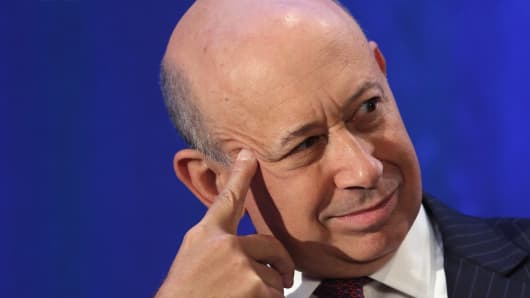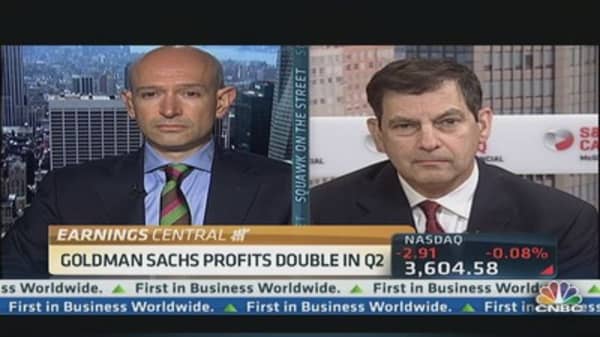The headlines blared what seems like great news for Goldman Sachs, with The New York Times announcing "Quarterly Profits Double." Yet the price of Goldman's stock immediately headed down. It's off about 1.5 percent at pixel time.
What happened?
Let's start with why the year-over-year numbers don't matter. Goldman Sachs second-quarter performance might look good compared with last year, but that's largely because the same period last year was horrific for Wall Street. Revenue at Goldman in the second-quarter 2012 was down 9 percent from the prior year and 33 percent from the prior quarter. Profits were down 11.5 percent. In business after business, Goldman (along with most of its peers) got its hats handed to it a year ago.
Goldman has recovered since. But the headline numbers comparing this year to last year are totally misleading. As they say on Wall Street, the comps were easy this quarter.
If you look at Goldman's earnings report, you'll notice that there are a lot of brackets and dashes in the quarter-to-quarter comparisons. Those brackets signify a decline in business and the dashes a flat. The businesses at the core of what Goldman does just didn't grow—and they often shrank.





